A big bright vivid orange bird sporting a black bib and a pair of stunning bright blue spectacles.
Meet the Orange Troupial
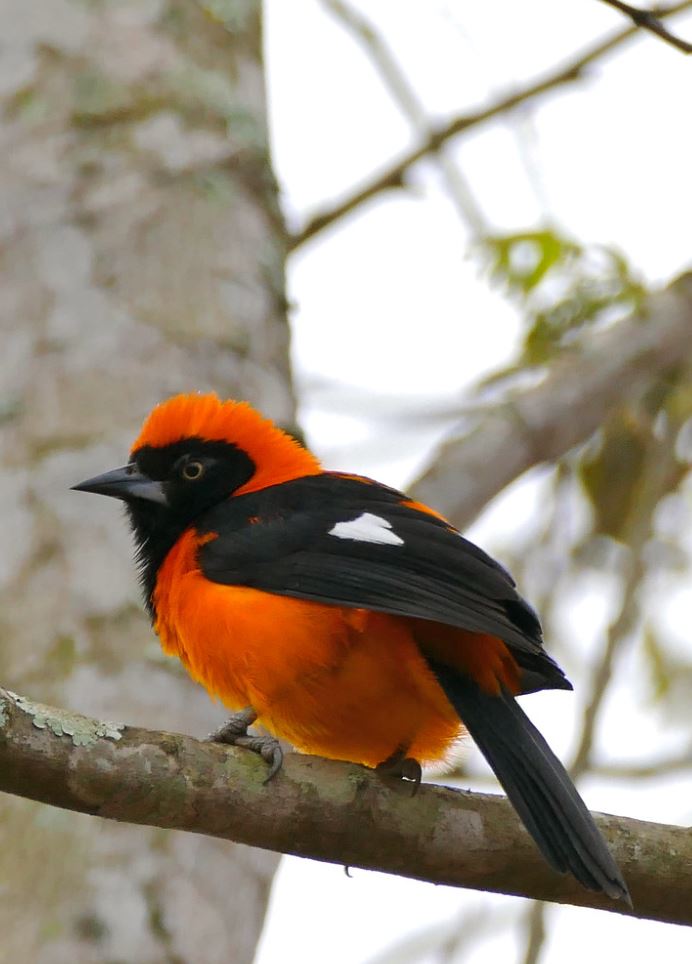
Photo Courtesy of berniedup / CC BY-SA 2.0
The orange-backed troupial (Icterus croconotus), is a species of bird in the Icteridae family. This is a bright orange apart from a black, face, wings, bib, and tail. There is a small white patch on the secondary wing feathers. They also have a bright orange streak on their shoulder along with a small blue ring of bare skin around their eyes.
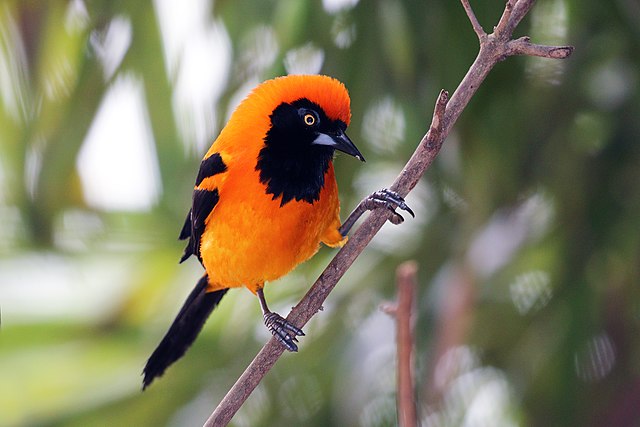
Photo Courtesy of Charles J. Sharp / CC BY-SA 4.0
Their song consists of a number of loud, musical bursts, usually two syllables long.
Both the female and the male are almost identical, something which is uncommon amongst many tropical birds.

Photo Courtesy of fveronesi1 / CC BY-SA 2.0
Orange-backed Troupial is found in Argentina, Bolivia, Brazil, Colombia, Ecuador, Guyana, Paraguay, and Peru.
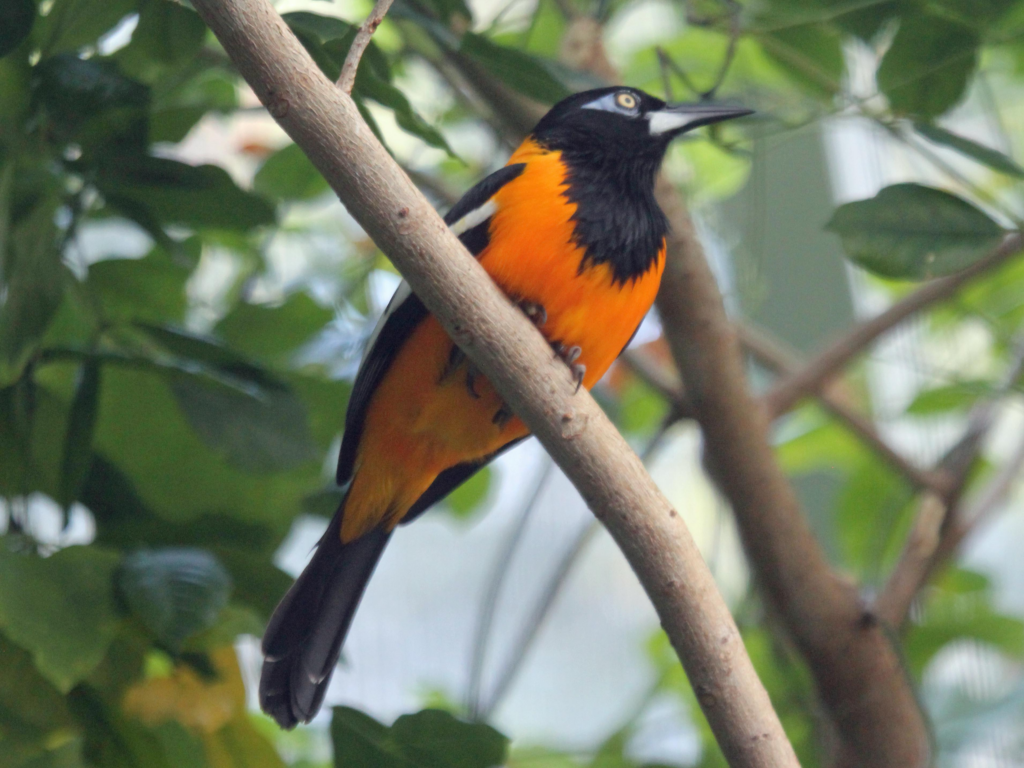
Photo Courtesy of DickDaniels / CC BY-SA 4.0
These birds like to live on forest edges and also in open wooded areas at altitudes up to 750 m in altitude.

Photo Courtesy of Bernard DUPONT / CC BY-SA 2.0
These birds often like to forage for food in pairs, dining on insects and other arthropods, as well as fruit. They will also eat nectar from wildflowers.

Photo Courtesy of felixú / CC BY-SA 2.0
They breed in July and August in Colombia, and between November and March in Bolivia and Paraguay. During the breeding season, Orange-backed troupials like to nest in abandoned nests of other birds. Though it will sometimes build nests in hollow logs. The female lays two to three eggs within which she incubates for about 14 days. The chicks become fledged 15 days after hatching, feeding on their after around 40 days old.
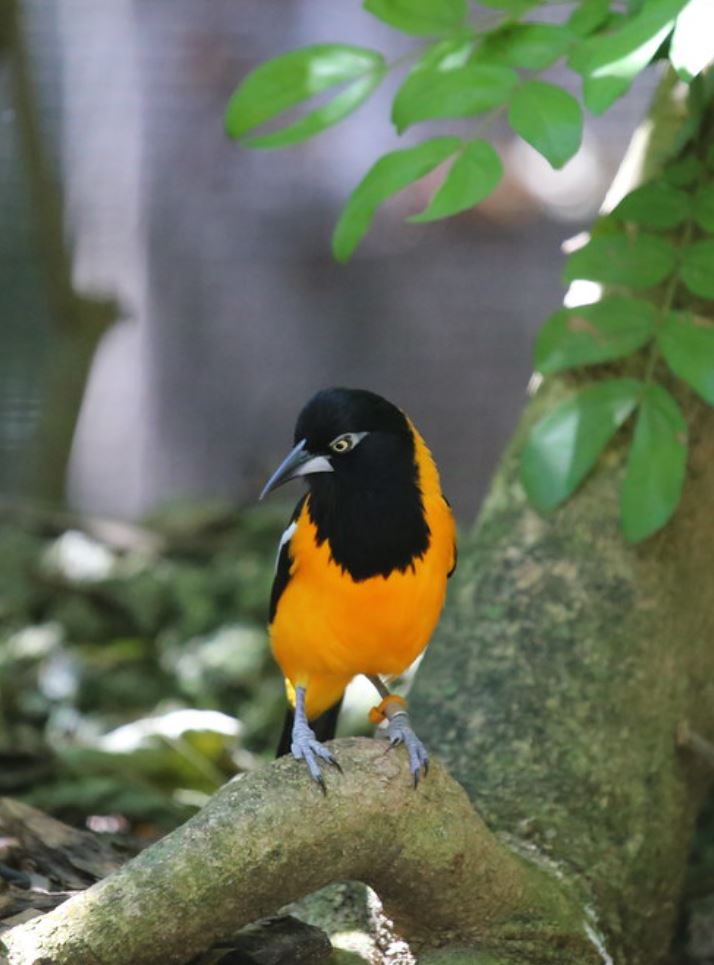
Photo Courtesy of cuatrok77 / CC BY-SA 2.0
With their population though to be in a downtrend due to deforestation in the Amazon, the rate of decline for Orange-backed troupials is not to be at such a rate to threaten survival.
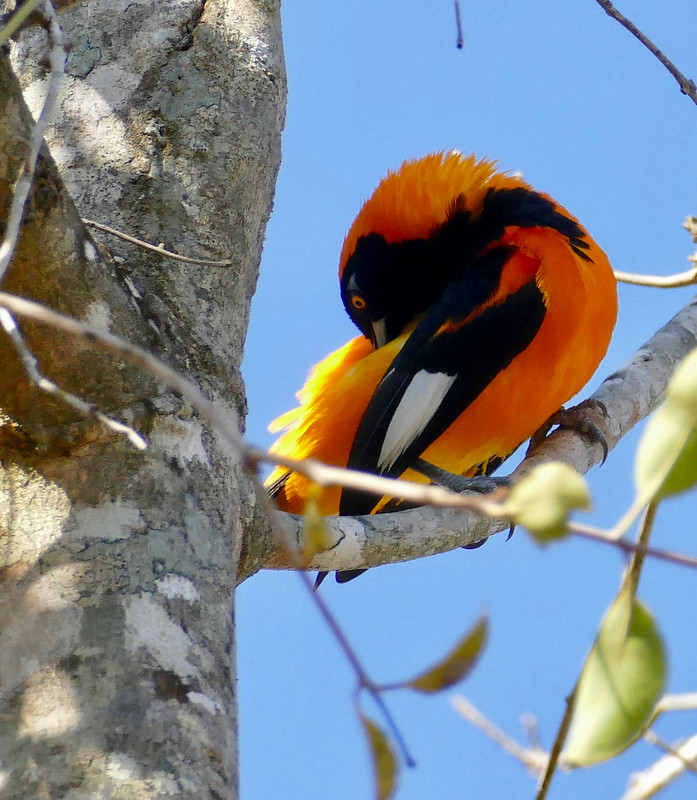
Photo Courtesy of Bernard DUPONT / CC BY-SA 2.0
Watch this bird right here in the video below:




